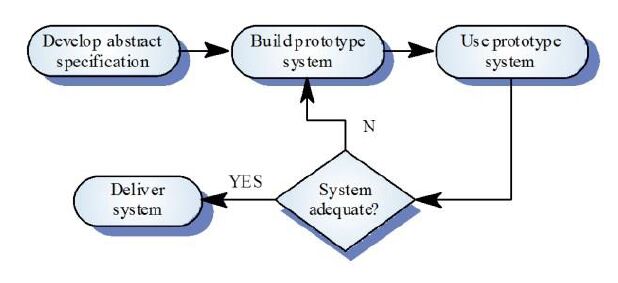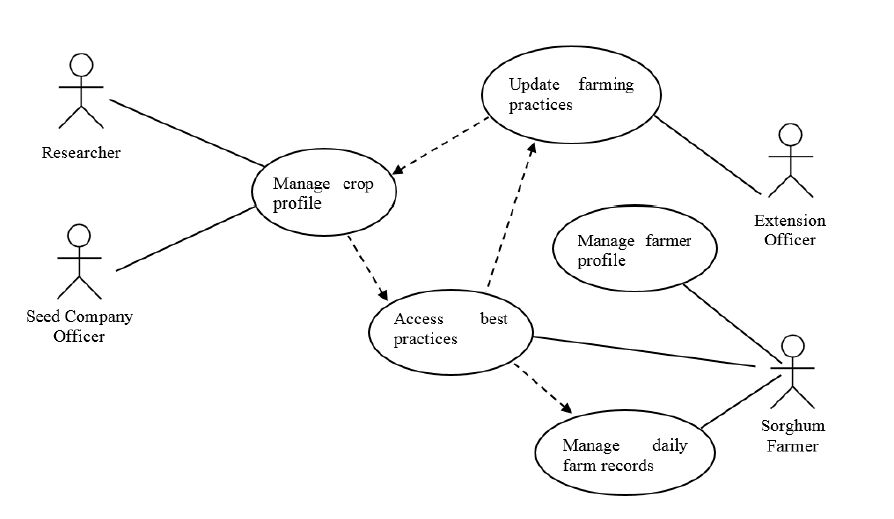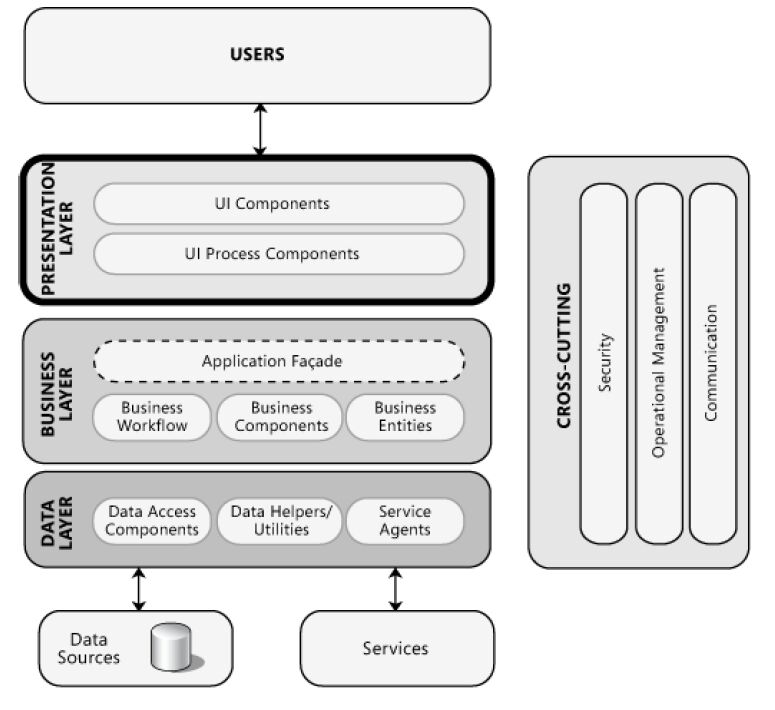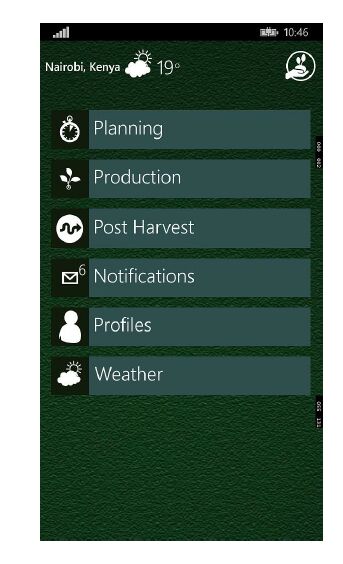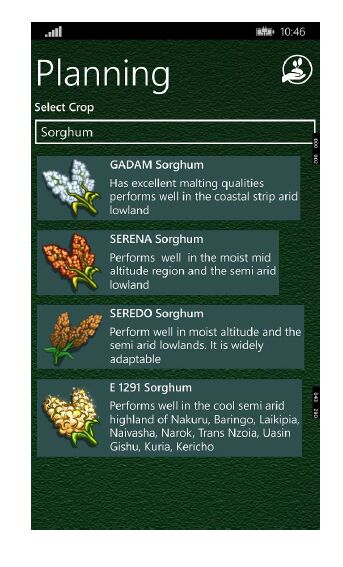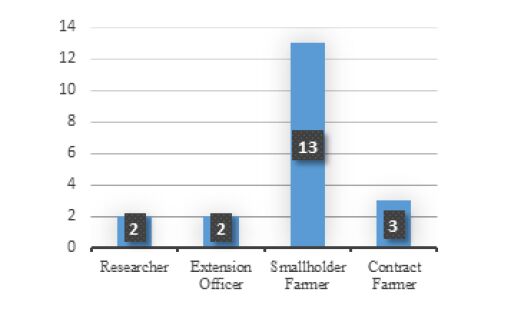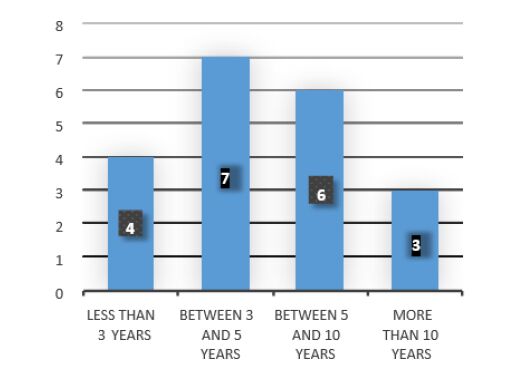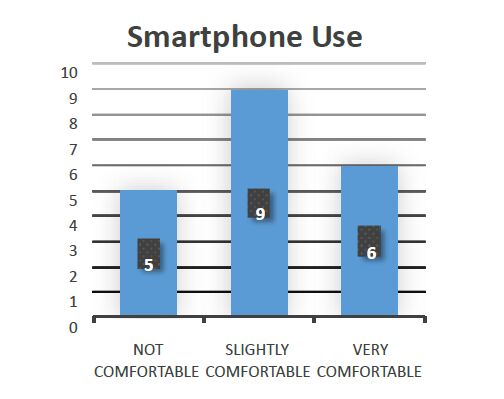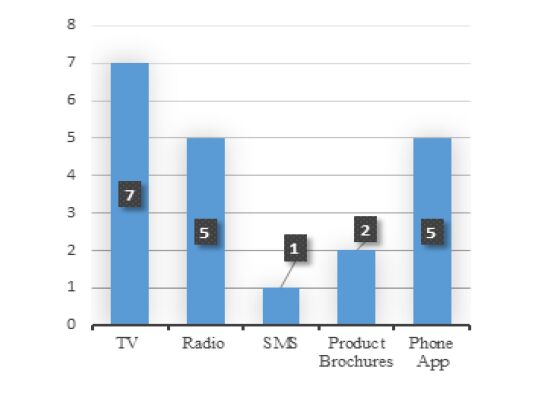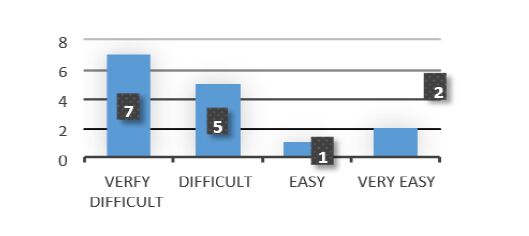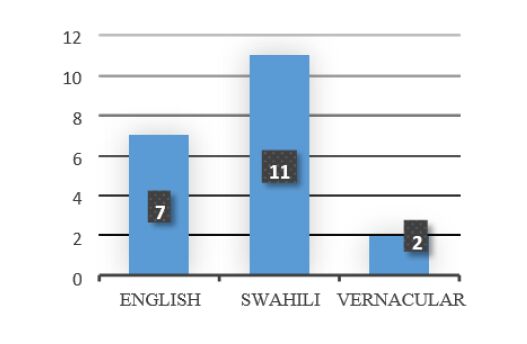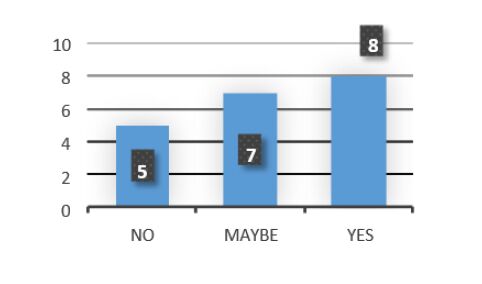1. Introduction
Food insecurity is a real issue in Sub Saharan African Countries. The level of food insecurity in these countries is about 27.7% [1]. Kenya has consistently been categorized as a low-income food deficit country, which is a regular importer and occasional exporter of food security crops, primarily grain. Around 54% of households in Kenya are food insecure, accounting for a total of over 15 million people in government estimates [2]. Maize remains the most important crop in Kenya [3] and the country is facing the food insecurity. Like most exotic crops, maize is prone to erratic weather conditions, which Kenya has experienced in the last 10 years [3].
A country is considered to be food secure when its people have consistent availability and access to sufficient, safe and nutritious food, which meet their dietary needs and food preferences for an active and healthy life [2]. Researches have progressively shown that traditional crops such as cassava, sorghum, millet and African peas have the potential to end severe food insecurity due to their tolerance to drought and ability to thrive under different types of soils [4]. These crops also build a socio-economic resilience into the community in the sense that they guarantee poor communities will feed themselves. Unfortunately, there is very little knowledge sharing when it comes to proper ways of farming these crops. This view is argued by a report mainly on millet and groundnut [4]. The biggest challenge with traditional crop farming has however been the isolated pockets of indigenous knowledge on growing these crops, as well as best practices for each crop [5]. Traditional crops farmers tend to know more about their local agroecosystems than anyone else does. This kind of knowledge is usually preserved by adults and passed down to younger generations by word of mouth, practice and informal educational system originating from the elaborate social interaction systems. This indigenous knowledge is unique and dynamic in nature changing through creativity and innovativeness [6].
The role that Information and Communication Technologies (ICT) can play in addressing these challenges is increasing as personal computing devices, especially mobile phones, are becoming more widely available. ICT, when embedded in broader stakeholder systems, can bring agricultural development and growth as it can help bridge critical knowledge gaps [7]. In addition, a knowledge exchange solution cuts across 67% of the farming life cycle stage, underlining the importance of knowledge management in agriculture [7].
Various ICT solutions have been proposed to address different problems in the agricultural production process and particularly Knowledge Management System (KMS). Among the existing ICT on agricultural Knowledge Management, we can cite Sissili Vala Kori (Sissili farmer's voice) in Burkina Faso [8], the Agricultural Research Extension Network in Uganda [9], Banana Information Line in Kenya [10] and the National Farmers Information Service (NAFIS) in Kenya [11]. These ICT services aim to transform and improve production processes.
A lot of work has been done towards knowledge-based systems for agriculture, but all these systems focused exclusively on exotic crops and not on indigenous. Multi-national seed companies, as well as chemicals and fertilizer manufacturers have consolidated KMS from experts over years on exotic crops and transferred it to farmers. The first challenge with these systems is that they are not structured to acquire local knowledge about traditional crops held by indigenous farmers. The second challenge is that each region in Kenya has a particular crop that suits its soil and climatic structure. The knowledge of which crop suits which zone is in isolated pockets, held by farmers and is not in a readily shareable format. Therefore, this paper aims to develop an approach for collecting best practices on sorghum farming from farmers in Tharaka, developing an approach for zone profiling to determine the ideal traditional crop for Tharaka, building a KMS prototype for indigenous crops production and testing the KMS prototype. The overall objective is to build a KMS, which can be used by indigenous crop farmers towards fighting food insecurity. The knowledge dissemination phase assumes a ubiquitous reach of local mobile operator networks in the region under study.
2. Materials and Method
2.1. Pre-study
The research design is the overall plan for connecting the conceptual research problems to the pertinent (and achievable) empirical research. One of the biggest challenges in building new software for communities is identifying and employing methodologies to identify relevant functionality for inclusion in the software [12]. For that reason, we carried out an exploratory study to identify the key aspects of the sorghum production process, which needs to be captured by the KMS.
Participatory action research for the pre-study encompassed participatory observation and note taking, informal as well as semi-structured interviews [12]. Moreover, this approach strengthened the research by emphasizing participation and action, providing an avenue for collective inquiry based on social history and experience [12].
We identified the "experts" (an expert in this case was any individuals or institutions who had any form of knowledge on the sorghum production process). The groups of experts in this case were the farmers, the agricultural researchers who worked in research institutions had built their knowledge through formal scientific research, the extension officers who had largely acquired their knowledge through trainings and interaction with the first and second group of experts (Table 1).
Table 1. Key informant information.
| Stakeholder Type |
Institution |
Informant |
Role |
Percentage
|
| Tacit Knowledge |
Individual |
Sorghum Small Holder Farmers |
Traditional Farmer |
65%
|
| Explicit Knowledge |
Smart Logistics |
Extension Officer 1 |
Extension Officer |
10%
|
| KARI |
Researcher 1 |
Researcher |
5%
|
| KARI |
Researcher 2 |
Researcher |
5%
|
| Ministry of Agriculture |
Data Analyst, Ministry of Agriculture |
Analyst |
10%
|
| NAFIS |
Data Analyst, NAFIS |
Analyst |
5%
|
We chose qualitative approaches to gather data through semi-structured interviews and observations. It is useful in investigating the complex interaction between technology and organizations [13]. We chose our group of experts on purpose. The level of involvement in the actual sorghum production process was the base of selection of our key informants (Table 1). Our first stratum was the stakeholder with Tacit Knowledge, and the second was Explicit Knowledge. From the stakeholder type, we chose sorghum farmers. From the explicit knowledge stakeholders, we have chosen respondent from Kenya Agricultural Research Institute (KARI), NAFIS, East African Maltings Limited, Kenya's Ministry of Agriculture, Kenya Seed Company, Agri-Seed Co Limited, and Modern contract sorghum farmers.
2.1.1. Pre-study data collection
We used primary and secondary data during the research. The secondary data was explicit in nature, from research publications and publicly available data sets on sorghum production from organizations such as Food and Agriculture Organization (FAO), United Nations World Food Program (WFP) and the Ministry of Agriculture of Kenya.
We collected primary data using face-to-face semi-structured interviews and the interviews lasted between one to two hours.
2.1.2. Pre-study data analysis
Data were analyzed through a coding and interpretation process. The coding consists of a process where interview responses were grouped into various classifications of a concept to determine meaningful categories [14]. Two key categories were considered in this case with the respondent generating tacit or explicit knowledge. The interpretation stage involved the use of both descriptive and inferential statistics for decision-making and drawing inferences. Descriptive statistics involved the use of frequency distributions, especially in determining best practices for a particular phase of the sorghum production process.
2.2. Prototype implementation and test
Prototyping is a system development method in which a prototype (an early approximation of a final system or product) is built, tested, and then reworked if necessary, until an acceptable prototype is finally achieved from which the complete system or product can be developed [15]. We used an evolutionary prototyping approach where an initial prototype is refined through a number of stages to the final system (Figure 1). This approach used an iterative process continuously matures the product as the user environment changed. Advantages were it provided an accelerated delivery of the prototype and provided the users with an opportunity to engage with the system as it evolved.
The interactions between users and systems are represented by using case diagrams (Figure 2). Case diagrams show the relationship between the user and the different cases in which the user is involved [15]. A user case is a list of all the ways of using a system to achieve a particular goal for a specific user [16].
2.2.1. Prototype design
We used an objected oriented design approach, which entails looking at the system design from the perspective of interactions between key objects. Objected oriented design relies on using cases as inputs to the final UML diagrams representing these dynamic interactions [15]. Unified modelling language provides a standardized approach to system components notation and provides an easy way for developers to understand the system to be developed [16].
2.2.2. Prototype development
A layered approach was used in implementing the system. A multi-layered software architecture is an approach to software design and architecture that uses different layers for allocating the different functionalities and attributes of a system. The key components of the system are illustrated in Figure 3.
Data Layer provides access to data hosted within the boundaries of the system, and data exposed by other networked systems. It exposes generic interfaces that the components in the business layer can consume [15].
Business Layer implements the core functionality of the system, and encapsulates the relevant business logic. It generally consists of components, some of which may expose service interfaces that other callers can use [15].
Presentation Layer contains the user-oriented functionality responsible for managing user interaction with the system, and generally consists of components providing a common bridge into the core business logic encapsulated in the business layer [15].
2.2.3. Prototype evaluation
We used usability testing as the primary evaluation approach. Usability testing is a technique used in user-centered interaction design to evaluate a product by testing it on users. We used the Grounded Theory to analyze our qualitative data [17]. It involves four steps: (1) data review; (2) generate codes; (3) searching for themes, and (4) reviewing and refining the themes.
Three thematic categories were involved in this case: (1) number of crops available on application, (2) market prices, and (3) languages support.
We purposively identified three categories of users for testing the application. The first and second category of users were the researchers and extension officers, who served as the key informants during the research pre-study. The third category of users consisted of smallholder and contract sorghum farmers. Mobile devices were provided to test the application. The first device was a Nokia Lumia 920 running Windows Phone 8.1 and connected to Safaricom (a telecom operator in Kenya) 3G network. The second device was a Huawei Ascend W1 running Windows Phone 8.0 connected to the Airtel (another operator) Kenya 3G network. This helped us to evaluate the application in different platform environments.
The users were asked to conduct a number of tasks using the application. These tasks were Registration, access crop profile, access training material, capture farming activities and review best practices. In addition, they were asked a number of questions on the usability of the application. Aiming to assess their level of satisfaction in interacting with the application.
The questionnaire was split into three broad sections: section 1, building background profiles of the end users; section 2, evaluating the suitability of a smart mobile application as a means of disseminating best practices to end users; and section 3, functionality assessment.
3. Results
3.1. Pre-study results
The major findings of the study are knowledge acquisition and knowledge dissemination (Table 2).
Table 2. Pre-study themes and sub-themes.
| Theme |
Sub-theme
|
| Knowledge Acquisition |
1. Knowledge sources
|
|
2. Enhancing research
|
|
3. Identifying best practices
|
| Knowledge Dissemination |
1. Access to best practices
|
|
2. Interactivity with farmers
|
3.1.1. Knowledge acquisition
The key informants interviewed commented on the fact that there was no easy way of identifying and acquiring knowledge from the different sources available. A total of 81.25% of our respondents were male against 18.75% female, and they were aged from 30 to 60 years old.
Knowledge sources
The stakeholders interviewed identified three broad categories of knowledge sources, namely, researchers, seed companies, and farmers. Both researchers and seed companies fall in the expert category and act as sources of tacit knowledge. Their research works are all well documented and made available to farmers, mostly in the form of product brochures.
The second category of knowledge sources consists of farmers primarily, who have been growing sorghum for a long period, mostly without reference to the tacit knowledge sources. It is however difficult to identify these traditional "experts".
Enhancing research
The interviewed researchers raised the fact that researchers are currently limited to the few model farms in agricultural research centers. This makes it difficult to ascertain how the seeds would perform in open farms outside the controlled research environments that they currently use. They were keen on a solution that would allow them to scale their research findings beyond the controlled environments at research institutions, and be able to collect data from open farms as well once a seed variant was available for public use. Smallholder farmers would be allowed to log into the program and the researchers would then be able to remotely use their data to improve their research findings and recommendations.
Best practices
The tacit knowledge informants commented on the challenge of identifying best practices from the different knowledge sources. There was a general agreement that farmers are forced to compare knowledge from different sources for them to identify what is ideal for their farms. There is a need for a simplified way of aggregating knowledge from all these sources and identifying the best approaches to production that cut-across. These informants also raised the second challenge of continuous improvement of these best practices based on farmers' production experiences.
3.1.2. Knowledge dissemination
The key informants interviewed agreed that seed companies and research institutions have collected a lot of tacit knowledge from studies over the years. This knowledge however is held by these institutions, and despite varied attempts to deliver this knowledge to farmers, none has deemed effective.
Access to knowledge
The interviewed farmers were aware that research institutions and seed companies have a lot of knowledge that would help in improving their farming practices. They were however not satisfied with current attempts to pass this knowledge to them. The primary method of knowledge dissemination was product catalogues and brochures. However, these are not regularly updated. Moreover, they lacked the required detail on particular processes. The second challenge was the fact that most brochures are provided in English and most farmers were not comfortable with the language.
Ecosystem interactivity
Most farmers interviewed commented on the fact that there was no easy way of interacting with experts. Experts all tend to be located at centralized locations, mostly at research and training institutions and were very few in numbers. Seed companies do provide extension field officers but are very few in number, like the ones provided by the Ministry of Agriculture. This means that the extension efforts are not scalable and farmers do not have an easy way of interacting with these tacit knowledge experts.
3.1.3. Proposed solution
This research proposes an integrated KMS that supports the sorghum production process in Tharaka. The first phase of the proposed system provided an interface for collecting common practices by farmers from the pre-cultivation, cultivation and harvesting stages of the production process. Farmers in this case served as the primary experts, albeit with tacit knowledge. The system also considered input from the secondary experts, including researchers and extension officers who had explicit knowledge on the sorghum production process.
Once this data is collected, it was aggregated in a centrally hosted relational database management system, which was hosted on a public cloud environment for fast and secure access. Farmers were continuously updating this database as they proceed with the sorghum production cycle. The solution was maintained with individualized calendar of activities for each farmer throughout the production cycle. The proposed solution had a logical layer that analyzed the collected common practices and determined sub-sets of best practices for each phase of the production process. This layer had a set of algorithms constantly updating the best practices as new information was introduced into the system.
This knowledge on best practices for the sorghum production process was disseminated to farmers primarily via mobile phone upon request. Mobile phone popularity in Kenya currently stands at 82.6% making it the most ubiquitous technology end-point in Kenya [18]. Farmers had the opportunity to access the KMS (Figure 4) either via a smart mobile application or through short message service (SMS) and unstructured service data delivery.
As shown in Figure 5, users were presented with a list of the different Sorghum varieties available, ordered by the most appropriate variety for their regions.
3.2. Study results
3.2.1. Quantitative analysis
The results were analyzed using bar graphs to represent the distribution of the responses to the structured questions.
Question 1: What is your current role in the sorghum production process?
As illustrated in Figure 6, the majority of the test users were smallholder farmers (13 respondents). We intentionally did this because farmers will eventually be the largest user base for the application. They would also be the source of the data to be used for refining the tacit knowledge from the researchers and extension officers.
Question 2: How long have you been involved in the sorghum production process?
As illustrated in Figure 7, four respondents had been involved in the sorghum farming process for less than 3 years, seven respondents between 3 to 5 years, six respondents between 5 to 10 years and only 3 of the test users had practiced sorghum farming for more than 10 years.
Question 3: How comfortable are you using a smartphone?
Figure 8 shows that 45% of the respondent were slightly comfortable in the use of a smartphone and 30% were very comfortable in its use.
Question 4: Which one would you prefer as a means of learning about sorghum farming?
As shown in Figure 9, 60% of the respondents would prefer to learn about sorghum farming through TV (35%) and Radio (25%). Only 25% would like to learn it from a phone app.
Question 5: How easy was it for you to navigate through the application sections?
As illustrated in Figure 10, 35% of the test users found the application very difficult to navigate.
Question 6: Which language would you prefer to have on the application?
As illustrated in Figure 11, 55% of the test users picked Swahili as the chosen language in using the application. This could be the reason why 35% of the users found the application very difficult to use and interact with it.
Question 7: Would you consider using the application over an entire crop cycle?
As illustrated in Figure 12, only 25% of the test users would not consider using the application over an entire crop cycle simply from the first interaction with the application. Further work is required in building digital literacy and having the application in a language that users were more comfortable with to achieve a greater adoption rate.
3.2.2. Qualitative analysis
The open-ended questions were asked to help in improving the general functionality of the application. All of the 20 test users had general feedback on the open-ended questions. We noted the following key themes.
Application scope expansion
Most test users felt that the system should include other crops as well. The majority of the smallholder farmers in south Tharaka are exploring green grams contract farming already. Farmers felt that the application would go a long way in accelerating the learning process for them. There was a consensus that the system would be of even more value if it were expanded to include livestock farming as well. The majority of the smallholder farmers in south Tharaka were already rearing traditional chicken and cattle.
Access to market
This was the most prevalent concern among the farmers, both smallholder and contract farmers. They felt that the system was only going half the journey in improving their productivity. One of the biggest challenges faced by all farmers is the access to buyers and profitable markets. Farmers were keen on tracking market prices and interacting with principal buyers directly from the application. We responded that this was beyond the scope of the research but would make recommendations for further work to integrate with existing market research platforms.
4. Discussion and Conclusion
We developed an application that tracks the farmer throughout the production cycle and provides information relevant to the current level of the production process, making it easier for the farmer to implement the proposed practice. This was our first objective.
On the second objective, an approach for identifying the ideal crops for specific ecological zones was developed based on the agro-ecological profile, the soil-type categorization and historical production of indigenous crops in that area. Once a smallholder farmer creates a profile on the system, the application picks the exact geo-coordinates of the farmer's location and continues to provide crop recommendations based on the ecological profile of the zone. The farmer was then presented with the ideal sorghum variant for production in that particular zone.
A KMS for indigenous crops production was developed as objective three. We developed a solution based on the thematic analysis carried out on the pre-study responses. The prototyping approach is evolutionary in nature, allowing for continuous improvement of the prototype, based on feedback and interaction with the end users.
Finally, on our objective four we presented the developed prototype to potential end users for evaluation. The evaluation phase was usability testing to assess the general interactivity of the system by the users. The second level of testing was open ended, allowing the users to give feedback on whether the prototype had the functionality, they needed.
This research brings to the fore the advancements made in introducing KMS for the production of exotic crops and investigates how to extend these advantages to indigenous crops farming. The Kenya's Ministry of Agriculture identified sorghum as one of the high value traditional crops that has enormous nutritional and industrial value. Therefore, there is a need to scale up these efforts. Moreover, ICT provides a platform to raise effective awareness on improving production processes. The proposed solution also offers a way of increasing interactivity between different stakeholders on the sorghum's production value chain and enhances cross-functional collaboration.
However, further research could look at plugging the solution into existing market analysis solutions and pulling data needs from third-party platforms or adding other indigenous crops.
Conflict of Interest
All authors declare no conflicts of interest in this paper.









 DownLoad:
DownLoad: 